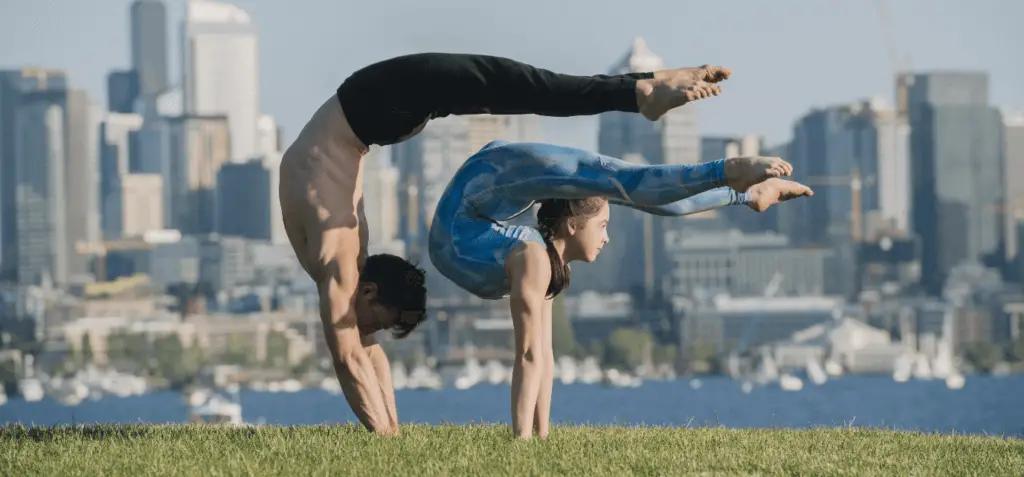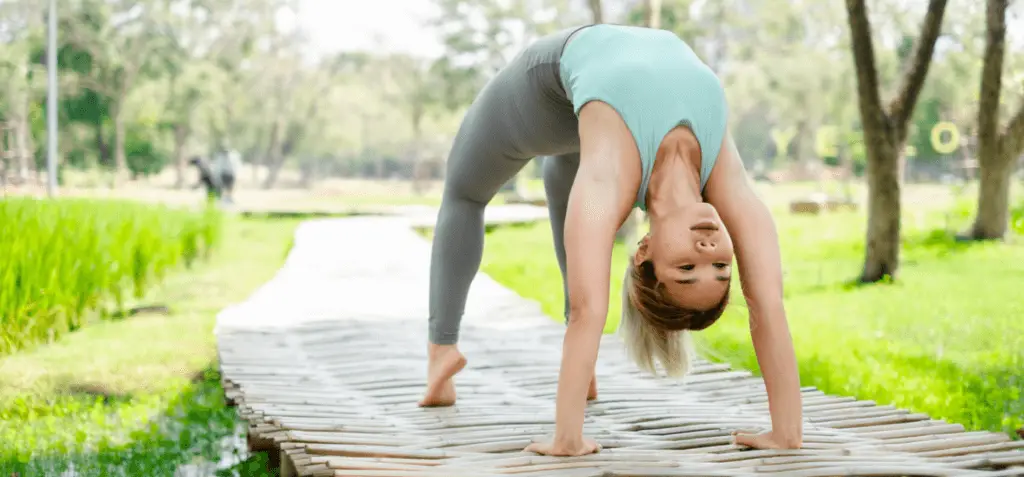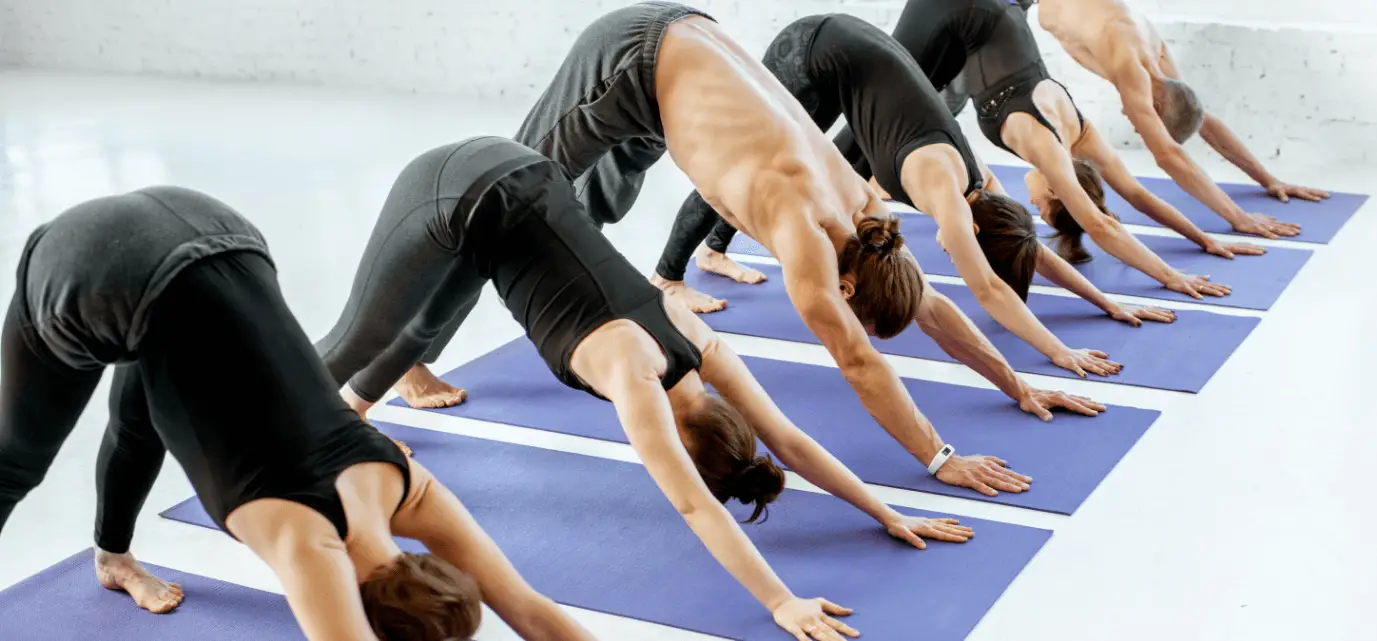In this article, we will explore the different features of yoga pants and guide you in choosing the best pants for yoga, so you can fully immerse yourself in your practice, focusing only on yourself and your well-being. From choosing eco-friendly materials to seasonally appropriate options, you will discover everything you need to know to make your yoga experience even more rewarding and comfortable. Take a moment to find out which type of yoga pants best suits your needs so that you can approach your practice with style and serenity.
Index |
Importance of appropriate clothing during yoga practice
Yoga, a millennia-old system of physical, mental and spiritual discipline, has gained increasing popularity in the modern world as a beneficial practice for overall well-being. In addition to offering a range of benefits for the body and mind, yoga is based on harmonizing movements and connecting with one's inner self. In this meditative practice, the clothing plays a crucial role, affecting the feeling of comfort and freedom during different asanas (postures) and sequences.
One of the basic elements of yoga clothing is "yoga pants," the pants specifically designed to allow a smooth and unrestricted practice. The main objective of yoga pants is to ensure comfort, flexibility and breathability, so as to facilitate the flow of movements and promote a more pleasant experience during practice.

Characteristics of Yoga Pants
Yoga pants are designed to provide the perfect combination of comfort, functionality and style during yoga practice. These pants differ from other sportswear and casual clothing in their specific features, designed specifically to meet the demands of yoga movements and postures. Let's take a detailed look at the main features of yoga pants that make them an ideal garment for your practice:
- Breathable Fabrics and Comfort: The choice of fabric is critical for yoga pants. Materials such as nylon, polyester and elastomers offer good breathability, helping to keep the skin dry even during more intense yoga sessions. These lightweight, soft fabrics allow ample freedom of movement and minimize the risk of skin irritation.
- Fit and Flexibility: Yoga pants are designed to fit snugly to the body without being too tight or restricting movement. A snug, but not overly restrictive, fit allows asanas to be performed with agility and balance, providing the proper support for the legs and muscles during practice.
- Belt: Yoga pants can feature several different belt options. High-waisted models offer more coverage of the abdomen, helping to support the lower back and allowing for more security during challenging poses. Low waist pants, on the other hand, may be more comfortable for those who prefer less restriction in the abdominal area.
- Important Details: Yoga pants can be equipped with additional details to further enhance the practice experience. Side or back pockets can be handy for keeping personal items such as smartphones, keys or cards safe. Adjustable drawstrings at the waist allow the fit to be adjusted to individual preferences.
- Versatility and Style: Yoga pants stand out for their versatility, as they can be worn not only during yoga practice but also in other daily activities. Many people also love them for their casual and stylish style, making them perfect for sports or leisure wear.
Choosing yoga pants with the right features will allow you to fully enjoy your yoga practice, focusing only on your feelings and connection with your inner self. In the next chapter, we will explore the difference between yoga pants and leggings, helping you make the best choice for your needs and preferences.

Yoga Pants vs. Leggings: What is the Difference?
Many people often wonder what the difference is between yoga pants and leggings, as the two garments may seem similar at first glance. However, there are important distinctions between these two garments, both in terms of design and purpose. Let's clarify the differences between yoga pants and leggings:
- Design and Purpose:
- Yoga Pants: Yoga pants are designed specifically for practicing yoga and other physical activities, such as pilates or barre. They usually have a tighter fit in the thigh and knee area, but have a wider cut at the flexion points of the legs. This design aims to allow ample freedom of movement during yoga postures and provide the right muscle support.
- Leggings: Leggings, on the other hand, are designed primarily as casual or fitness garments. They have a tight fit over the entire length of the leg, without any cut or width at the bending points. They are often made of stretch fabrics that hug the body and highlight the silhouette.
- Coverage:
- Yoga Pants: Yoga pants, especially high-waisted yoga pants, provide more coverage in the abdominal and lower back area. This feature is especially appreciated during yoga sessions, as it prevents the waistband from shifting or dropping, providing a feeling of security during head-down or upper-body extension poses.
- Leggings: Leggings tend to be lighter and less opaque, as they are often worn as casual or fitness wear. The waistband of leggings can vary in height, but they generally do not provide the same level of abdominal support as yoga pants.
- Versatility:
- Yoga Pants: Yoga pants are designed primarily for yoga practice, but are still versatile enough to be worn during other sports or leisure activities. They are ideal for those who want a garment that combines comfort and functionality.
- Leggings: Leggings, due to their snug fit, are suitable for multiple uses, whether for a casual look or for sportswear. They are often chosen as an alternative to fabric pants for comfort and elegance.
In conclusion, while both yoga pants and leggings are valued for their comfort and versatility, it is important to consider their main purpose and the level of support you need during your yoga practice. If you are looking for a garment specifically designed for yoga, yoga pants are an ideal choice. On the other hand, if you want a garment suitable for various activities or for a casual look, leggings may be a viable option.

Eco-Sustainable Materials for Yoga Pants
Concern for the environment and sustainability is becoming increasingly important in the fashion industry, including that of yoga pants. Many brands are adopting eco-sustainable materials for the production of these garments in order to reduce environmental impact and promote a more responsible textile industry. Here are some of the eco-sustainable materials used to make yoga pants:
- Bamboo fiber-based fabrics: Bamboo is a highly sustainable natural resource, as it grows rapidly without requiring pesticides or fertilizers. Fabrics made from bamboo fiber are soft, breathable and biodegradable, making them an environmentally friendly choice for yoga pants.
- Tencel (Lyocell)-based fabrics: Tencel is a fiber made from wood cellulose from trees grown on sustainable plantations. The production of Tencel is a closed process with low environmental impact. Tencel fabrics are highly breathable, antimicrobial and biodegradable.
- Recycled fabrics: Some yoga pants brands use recycled materials, such as recycled plastic (PET) from bottles or fishing nets abandoned in the oceans. By converting this waste into fabrics, pollution and resource consumption can be reduced.
- Organic cotton: Organic cotton is grown without the use of pesticides or harmful chemicals, promoting more sustainable and environmentally friendly agriculture. Organic cotton fabrics are soft and suitable for yoga pants.
- Sustainable fabric blend: Some yoga pants are made from a blend of environmentally sustainable materials, combining organic cotton with bamboo fiber or Tencel, for example, to achieve a durable and comfortable fabric.
Adopting environmentally sustainable materials in yoga pants not only helps reduce environmental impact, but can also offer additional benefits such as improved breathability, durability, and comfort. When purchasing yoga pants, it is advisable to check labels or manufacturers' websites to identify the materials used and choose options that reflect sustainability values.
By purchasing yoga pants made from eco-friendly materials, you can support the sustainable fashion industry and contribute to greater environmental awareness. Choosing eco-friendly clothing not only enhances your practice experience, but is also a small step toward a more environmentally friendly future.

Choosing Yoga Pants According to Seasons
Yoga practice can be consistent throughout the year, and to cope with different weather conditions, it is important to choose the right yoga pants for each season. The right choice of yoga pants will allow you to feel comfortable no matter what the temperatures are outside, allowing you to fully focus on your practice. Here are some tips for choosing yoga pants according to different seasons:
- Summer Yoga Pants:
- Lightweight, breathable fabrics: During the summer, look for yoga pants made from lightweight, breathable fabrics, such as nylon or polyester. These materials help keep you cool and dry even during the hottest yoga sessions.
- Short or 3/4 length: Opt for short or 3/4 length yoga pants to allow more air circulation and reduce excessive heat sensation.
- Light colors: Light colors reflect sunlight better and help maintain a cooler temperature.
- Winter Yoga Pants:
- Thermal fabrics: During winter, favor yoga pants made of thermal or plush materials, such as brushed cotton, to keep muscles warm during practice.
- Full-leg length: Choose full-length yoga pants to protect your legs from the cold and maintain your body temperature.
- Dark colors: Dark colors absorb heat better, helping to keep the body warmer during cold temperatures.
- Yoga Pants for Half Seasons:
- Versatile fabrics: For mid-seasons, opt for yoga pants made from versatile fabrics that offer a good balance between breathability and heat retention.
- Length 7/8 or 3/4: Intermediate lengths, such as 7/8 or 3/4, are perfect for mid-seasons, when temperatures may vary.
- Neutral colors: Neutral colors are easily adapted to all seasons and can be easily matched with different tops.
Regardless of the season, it is critical to ensure that yoga pants are comfortable and allow ample freedom of movement. Before purchasing, try on yoga pants and experiment with a few yoga poses to make sure the fabric and fit are right for you.
In conclusion, choosing yoga pants according to the seasons will allow you to experience your yoga practice in harmony with the surrounding nature. By embracing the right combination of fabrics, lengths, and colors, you will be able to approach each season with comfort and style, fully experiencing the well-being that yoga has to offer.
Summary of key features for choosing the ideal yoga pants
Choosing the right yoga pants is critical to fully enjoy the practice of yoga and to ensure maximum comfort and support during each pose. Every detail, from fabric to fit, plays a crucial role in the practice experience, allowing you to focus on connecting with your body and mind.
Yoga pants offer specific features that distinguish them from leggings and other sportswear. With breathable fabrics, a flexible fit, and details such as pockets and drawstrings, yoga pants prove ideal for yoga practice, providing the right balance of comfort and functionality.
In addition, considering the importance of sustainability in the fashion industry, many people choose yoga pants made from environmentally sustainable materials. In addition to benefiting from the high breathability and comfort of these fabrics, choosing sustainable materials helps to preserve the environment and promote a more responsible future.
Finally, adapting the choice of yoga pants to the different seasons is an important aspect of continuing to practice yoga comfortably all year round. From lightweight and breathable fabrics for summer, to thermal materials and full-leg lengths for winter, and versatile fabrics for mid-seasons, yoga pants can be selected according to the specific needs of the climate.
In conclusion, investing in choosing the right yoga pants is a significant step in improving your yoga practice experience. Comfort, breathability, support and sustainability are key aspects to consider. Remember that by wearing the ideal yoga pants, you can fully immerse yourself in the present moment, focus on your breathing, and experience harmony between body, mind, and spirit during each yoga session. Whether you are a beginner or an experienced practitioner, choosing the best yoga pants will be a valuable resource for your personal growth and well-being through your yoga practice.

